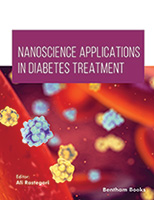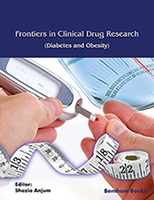A 20-something woman, on over-the-counter appetite suppressant pills for an overweight condition, stays up all night to complete a paper due the next day. To stay alert she takes a stimulant drug along with a few beers. She then takes an herbal sleep aid and sends an email to her professor at 4 am that she will hand deliver the paper herself later that morning. A few hours later, she begins to feel sick with vomiting, dizziness and calls poison control for help. She arrives at a local hospital by ambulance and is given a sedative that puts her in deep sleep. Later that evening she is found to have brain damage, is put on life support and dies six days later. After five years and a four week trial, the jury finds the hospital and its staff not negligent and in the jury’s opinion the 20-something had “an overexerted lifestyle” with lack of sleep and a cocktail of drugs.
While tragic indeed, not a day goes by that we don’t hear about an illness, condition or even death brought on all as a result of the way we live, work and go about our everyday lives; what we call “Lifestyle Diseases”. In a world which is “hyper-connected”, urbanized, technologically advanced, and scientifically enriched; sleep, alcohol abuse, drug and tobacco use are usually an after-thought and where physical activity and healthy eating have become an exception rather than the norm. As per the World Health Organization (WHO), our altered lifestyles that result in chronic non-communicable diseases (NCDs) such as obesity, diabetes, heart disease, metabolic syndrome, chronic lung and many cancers account for 50% of the global burden of disease. Furthermore, of the sixty million global deaths that will occur this year, nearly two-thirds or forty million will be secondary to NCDs.
In large parts of the world, especially middle and low income countries, many of these diseases are detected late requiring more expensive and extensive medical care. With most if not all of this care covered through out-of-pocket payments, millions get pushed into poverty year after year. Clearly then, lifestyle diseases are a consequence of man’s inability to adapt to this rapidly and constantly changing environment, where immediate gratification takes precedence over everything else, and where affluence and material possession are a fight to the finish line. Can we then change our behaviors, our environments and the way we deliver health care services that would help us ward off these illnesses? Research clearly indicates that lifestyle illnesses all share common risk factors, with unhealthy diets, physical inactivity, overweight, obesity and tobacco and alcohol abuse leading the way. So, prevention strategies aimed at reducing the incidence of any one chronic malady, will not only help lower the incidence of that particular condition, but also the incidence of many other chronic illnesses.
With this epidemic of NCDs showing no signs of abating, we find ourselves in the midst of the most challenging times ever - with our financial, climate and health systems in total disarray. And, the problem is expected to get even worse, with the WHO projecting 2.4 billion overweight and 700 million obese individuals worldwide by the year 2015. With “total inaction”, WHO estimates the total cost to the global economy in the range of $ 50 Trillion through 2030 mainly secondary to productivity losses and medical treatments for lifestyle ailments. We, therefore consider the World Economic Forum’s projected annual global price tag to fight these ailments at $15 Billion a real steal. We must begin now!
We are deeply indebted to Dr. Selwyn who in his foreword sets the stage by highlighting obesity and related diseases as the global challenge of this century. He calls on us to create the kinds of environments and communities in which we promote health, prevent disease and create a healthier world for one and all. This eText; “Obesity & Disease in an Inter-connected World: A Systems Approach to Turn Huge Challenges into Amazing Opportunities,” sets out to provide a roadmap to help turn the tide, by addressing first in Section One, the global burden of highly prevalent but easily preventable risk factors and related conditions, their epidemiology, and the complex biological processes for some of the different disease states, and then going on to highlight in Section Two, the evidence-based opportunities available to prevent and address risk factors via health and nutrition education, individual and group counseling, promotion of physical activity and active living, and the importance of adequate sleep, stress management, yoga, meditation and the proper use of pharmacological medications. It is in Section Three that the eBook delves into the much-needed systems approach required to strengthen health systems globally; provision of universal health insurance, the importance of greater investments in community, workplace and life-course health programs, the leveraging of health information technology for the greater good and the global leadership and accountability that will be required for the proper implementation of NCD interventions to achieve the post-2015 Millennium Development Goals (MDGs). As members of the global health community, the contributing authors toward this eBook hope to make the case that better health is a basic fundamental right of every human being, and that enhanced investments in health will help us move forward toward achieving the thus-far elusive goals of health equity, social justice, and financial protection. While the action plans and the resulting key objectives, as outlined by the various authors, may appear to be similar and at times repetitive, this was indeed our intention such that each and every chapter is complete and fully justified as a “stand-alone” and as part of the entire publication.
Acknowledgement
We thank our colleagues for sharing their insights as contributing authors. Their chapters address the challenges posed by the global rise in obesity and related co-morbidities and explore opportunities for innovative solutions using a systems approach.
Our sincere appreciation goes to Guy Laufer, MPS, who designed the eBook cover, to illustrate the interconnections we need to consider in dealing with obesity.
Our deepest gratitude goes to Maryellen P. Brucato, DPM, AACFAS, who made it all possible. She tirelessly read and made valuable editing suggestions. Her contributions also included helping us consider the widely varying systems involved in obesity prevention and control.
We thank Bentham Science with a special appreciation to Ms. Hira Aftab of the eBooks Publications Department for her valuable assistance towards the completion of this eBook.
Judith Wylie-Rosett, EdD, RD
Atran Foundation Chair in Social Medicine, Professor and Division Head for Health Promotion
and Nutrition Research, Department of Epidemiology and Population Health, Albert Einstein
College of Medicine
Bronx, NY, USA
&
Sunil S. Jhangiani, MD, MBA, FACP, AGA
Division of Gastroenterology and Clinical Nutrition
Department of Medicine (Wakefield Campus)
Montefiore Medical Center
Clinical Assistant Professor of Medicine and Family and Social Medicine
Albert Einstein College of Medicine
Bronx, NY, USA









